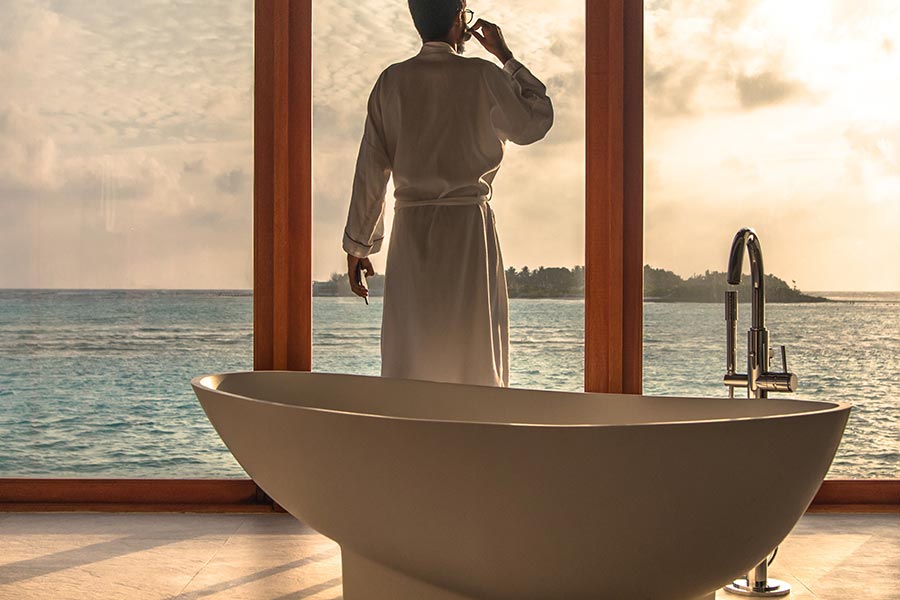Luxury brands often miss the opportunities to reach the highest echelon of travelers by serving down-market experiences. It’s the result of a troubling trend of mass market luxury, standardized luxury travel marketing appeals to both HNW and UHNW individuals, and the homogenization of luxury goods and services across these tiers of wealth.
The roots of these issues lie in a slew of societal, cultural and technological trends unfolding in recent years. The ubiquitous exposure of digital platforms like Instagram and the rise of the sharing economy are some of the most prominent contributors. However, collectively, these factors are manifold.
To efficiently target new customers, and to successfully retain them, the distinct expectations and needs of HNW and UHNW consumers ($1M-$29M v. $30M) must be considered both when creating the luxury travel experience itself, as well as the luxury travel marketing campaign. A luxury brand must understand a client’s level of wealth prior to designing travel experiences.
The Democratization of Luxury
Jaclyn Sienna India is owner and founder of the luxury travel agency Sienna Charles. She works with UHNW clients, designing unique travel experiences. She notes that luxury travel marketing has become the great equalizer. “Everyone is trying to make hotels and everything ‘luxury’ accessible… hotels are trying to appeal to everyone based on what is happening on Instagram. Now people who are not wealthy can afford ‘luxury’ vacations,” she observes.
Looking the part of luxury is notably easier than delivering such experiences in live settings. India travels 200 days per year, noting properties touting the term “luxury” often lack the service component. “So many people are opening hotels. They can always have the great architecture, the furniture… There are more [properties] that have them than don’t. However, you need to understand and get to know UHNW guests and service them accordingly. It’s the least amount of focus these days, yet experience takes precedence.”

Service: The Missing Link
Jaclyn Sienna India says “everyone is selling and not servicing”. She refers to the disconnect between improvements in hotel marketing imagery and luxury travel marketing, and actual service. “Luxury experiences need to be tailored and custom, [and on most occasions], nothing has been custom about their stay,” she goes on to explain.
Meanwhile, the sharing economy brings its own unique set of challenges. Companies among the likes of JetSmarter attempt to appeal to both the UHNW consumer and any traveler with $2-$3,000 worth of disposable income. India says, “Private memberships are mixing different demographics. A billionaire could sit next to someone who put [the charge] on his Amex. There’s a new resurgence of non-luxury companies trying to get into the luxury game. Airbnb is selling stays at $10,000-a-night villas and yet they don’t even check out their properties. Everyone is trying to get into experiences… [with many companies] at the end of the day, you call and speak to a robot and no service is attached to the experience. No one cares and no one thinks about what they want to achieve with their travel.”
UHNW luxury travel marketing and offerings must excel in service, personalized attention and exclusivity.
Mass Market Luxury (HNW) vs. Top Tier Travel (UHNW)
Thus the question remains, what distinguishes UHNW travelers’ needs from those of their HNW counterparts? Service. Here are five ways to excel in serving individuals of wealth:
1. Remain Small.
Service is often sacrificed on the path for growth. Luxury hotel brand conglomerates exemplify these challenges. “Smaller lines like The Dorchester, with 8 properties, are getting it right. You lose a sense of who you are and why you started this when you grow and grow,” advises Jaclyn Sienna India. “Clients spend $100k to $1M for travel experiences so we meet them to find out who they are and what they love. You’re always face-to-face working with a professional for other industries, but travel is so anonymous and done online.”
2. Attend to Every Detail.
Sienna Charles has produced bespoke and truly luxurious experiences for adventurous UHNW travelers over the last decade, including building tents in Africa and Israel. In contrast, India underscores the luxury travel marketing strategies of hotels to construct glamping tents for imagery’s sake without the crucial attention to detail. She has personally witnessed a stateside West Coast example lacking indoor restrooms and featuring shared shower facilities.
Other examples, India shares, include “marketing ploys like spa and wellness”. “At the end of the day, they’re still using chemical products in their spas. They’re not really offering a wellness perspective.”
3. Deliver Bespoke Offerings and Experiences.
Carefully assess every partner, collaborator, product and service to guarantee truly luxurious offerings and experiences. This extends to the numerous luxury travel agencies delivering mass-marketed luxury travel. These companies provide automatic free amenities and upgrades on behalf of luxury brands, an expedient route to brand dilution and the loss of true luxury.
4. Make Privacy a Priority.
UHNW clientele expect and require privacy. The wealthiest consumers do not take pictures at resorts due to privacy concerns, and yet many properties pose the risk of other travelers’ documentation habits. These images and videos, in addition to location geotags, are risks that must be eliminated.
5. Market to a Single Tier (HNW or UHNW).
A blanket strategy to please HNW and UHNW clients will almost certainly undermine your goals to attract and retain new customers. Note key differences among the various tiers of wealth. For instance, most UHNW clients require the reassurance that they are the only individuals who can afford their special luxury travel experiences. As India describes, it has become increasingly difficult for the UHNW client to uncover these experiences at restaurants, in hotels and in the sky. Understand clients’ wealth levels and expectations; aim to exceed.
Photo credit: Unsplash
